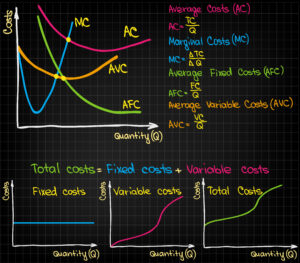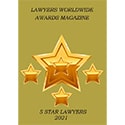McDonald’s Fails to Shake Off Antitrust Fangs of Hourly Workers in Poaching Clause Case
By: Jeffrey M. Goldstein, Goldstein Law Firm, LLC
Until recently, some franchise agreements, including those in the McDonald’s system, included a ‘no-poaching’ clause for workers from other franchises. These clauses historically had gone unchallenged by the government, franchisees, and workers. In a recent case involving the McDonald’s no-poaching clause, however, a United States District Court for the Seventh Circuit (“Court”) considered hourly workers’ claims that the no-poaching clause prevented them from taking higher-paying offers at other franchises and, as such, violated the antitrust laws.
The district court decision that was challenged on appeal recognized that under Sherman Act Section 1, claims fall into two distinct categories: “naked restraints, akin to cartels, are unlawful per se, while other restraints are evaluated under the Rule of Reason. (The quicklook approach, see NCAA v. University of Oklahoma, 468 U.S. 85 (1984), is a subset of analysis under the Rule of Reason.).” In this regard, the district court rejected the per se theory of liability stating that “the anti-poach clause is not a naked restraint but is ancillary to each franchise agreement—and, as every new restaurant expands output, the restraint is justified.” The district court also deemed the complaint deficient under the Rule of Reason because it did not allege that McDonald’s and its franchises collectively had power in the market for restaurant workers’ labor. Under the Rule of Reason, failing to allege that the defendant or defendants held market power is fatal. In turn, the district court gave the plaintiffs leave to file an amended complaint that alleged market power; however, they refused to do so, and the case was dismissed with prejudice, ending the suit at the trial level. The plaintiffs immediately appealed the case, resulting in the appellate decision discussed herein.
On appeal, the Circuit Court rejected the plaintiffs’ assertion that the existence of market power was too obvious to need allegations and proof. As the Court explained, the defect in that argument is that it relies on treating “‘workers at McDonald’s’ as an economic market.” According to the Court, treating employees at a single chain as a relevant market was unsound because “People who work at McDonald’s one week can work at Wendy’s the next, and the reverse.” The Court continued:
People entering the labor market can choose where to go—and fast-food restaurants are only one of many options. If wages are too low at one chain, people can choose other employers. The mobility of workers—both from one employer to another and from one neighborhood to another—makes it impossible to treat employees at a single chain as a market.
Indeed, the Court relied upon several of the district court’s findings to refute the proposed situation where employees for only a single brand could be treated as a market of its own. Pointing to the district court’s undisputed findings that within three miles of Deslandes’s home, there were between 42 and 50 quick-service restaurants as well as two McDonald’s franchises and that within ten miles of her home, there are 517 quick-service restaurants, the Court stated that “This is not a situation in which a court can treat employment for a single enterprise as a market all its own.” Based on this ruling, the Court concluded that “the Rule of Reason is out of this suit, and, as quick-look analysis is part of the Rule of Reason, it is out too.”
Refocusing its attention on the remaining per se claim, the Court quickly but adamantly concluded that “the district judge jettisoned the per se rule too early.” This is because market power is not essential to establish antitrust claims involving naked agreements among competitors. In turn, the Court focused on the district court’s ruling that the no-poach restriction was ancillary to the franchise agreement. Initially, the Court pointed out the general antitrust principle: “An agreement among competitors is not naked if it is ancillary to the success of a cooperative venture.” In this regard, the district court’s view was that the no-poach clause was justified as an ancillary restraint because it appeared in franchise agreements, which, in turn, expanded the output of burgers and fries. The Court attacked this conclusion on two grounds. First, the Court rejected the district court’s equating the benefits to consumers (increased output) from the no-poach rule as justifying detriments to workers (monopsony pricing). “That’s not right; it is equivalent to saying that antitrust law is unconcerned with competition in the markets for inputs.”Second, the Court rejected the district court’s equivalency argument (that because a franchise system increases output, every clause in the agreement can withstand antitrust scrutiny as an ancillary permissible restraint), explaining that the no-poach clause may be disconnected causally with an increase in output. Citing a historical hornbook for antitrust, the Court stated: “A restraint does not qualify as ‘ancillary’ merely because it accompanies some other agreement that is itself lawful.” Phillip E. Areeda & Herbert Hovenkamp, Antitrust Law: An Analysis of Antitrust Principles and Their Application.
In an offhand comment, the Court asked, “Is there some reason to think that a no-poach clause promotes the production of restaurant food?” Concluding not, the Court suggested, “maybe it takes advantage of workers’ sunk costs and helps each business’s bottom line, without adding to output.” What does this cryptic assertion mean? The Court explained:
People who choose to work at McDonald’s or one of its franchises acquire business-specific (or location-specific) skills. Employees may choose to work for less than their marginal product in order to compensate the employer for the training. In a competitive market, workers recover these investments as their wages rise over time, in response to their greater productivity. But if McDonald’s specifies a limited number of classifications of workers (something the complaint also alleges), that may delay promotion and frustrate [**10] workers’ ability to recoup their investments in training. One way to obtain a higher salary, after paying for one’s own training through lower wages, is to seek employment at another similar business where the skills can be put to use at the market wage. Deslandes alleges that this is what she tried to do, only to be blocked by the no-poach clause. And if this is what the no-poach agreement does—if it prevents workers from reaping the gains from skills they learned by agreeing to work at lower wages at the outset of their employment—then it does not promote output. It promotes profits, to be sure, as franchises capitalize on workers’ sunk costs. But it does not promote output and so cannot be called “ancillary” in the sense antitrust law uses that term.
The Court next discussed what it viewed to be the other side of the argument that the no-poach clause increases efficiency by augmenting output using the following hypothetical:
Common training and job classifications could in principle justify restraints on poaching. Suppose Franchise A hires workers and pays for necessary training, rather than requiring the workers to cover their own training costs through lower wages. During training in this approach, the wage exceeds the worker’s productivity, but after training the worker produces enough value to pay back the costs of training and allow A to recoup the [**11] “excess” wage during training time. A needs to keep the worker for this to pay off. If Franchise B offers no training but a higher wage, this will be attractive to the worker who was trained at A, and B can make a profit from free riding on A‘s investment. B can do this because the restaurants have the same layout, tasks, and so on. In these circumstances a ban on poaching could allow A to recover its training costs and thus make training worthwhile to both franchise and worker. It would not imply monopsony. But eventually the cost of training will have been amortized, and a ban on transfer to another restaurant after that threshold could be understood as an antitrust problem.
Given these competing theoretical hypotheticals, the Court asked the obvious crucial question regarding the purpose of the specific no-poach clause in the McDonald’s franchise agreements: “Was it protecting franchises’ investments in training, or was it allowing them to appropriate the value of workers’ own investments?” Rather than answering the question at the same theoretical level at which it had established and defined the landscape of the decision-making matrix, the Court asked several more questions:
Why did the clause have a national scope, preventing a restaurant in North Dakota from hiring a worker in North Carolina, when the market for restaurant jobs is local? Why did the restriction last as long as the employment (plus six months), rather than be linked to any estimate of the time a franchise would need to recover its investments in training? If the answer to some of these questions depends (as McDonald’s asserts) on the fact that the system as a whole advertises for workers and wants to prevent some outlets from free riding on the contributions of others, how do the terms of the no-poach clause reflect this objective?
After emphasizing the relevance of its questions, the Court then explained that it was inappropriate to require that the parties provide answers at the very early pleadings stage of the litigation:
These are all potentially complex questions, which cannot be answered by looking at the language of the complaint. They require careful economic analysis. More than that: the classification of a restraint as ancillary is a defense, and complaints need not anticipate and plead around defenses.
Before vacating the decision and remanding the case to the district court, the Court surprisingly took an additional swipe at the district court for the abstract procedural standard it appeared to use to justify the dismissal of the antitrust complaint. The Court’s first criticism in this regard was that to withstand a motion to dismiss, the plaintiff needed to plead only a plausible claim, not one that includes facts sufficient to “win.” Second, the Court undercut any need for an antitrust plaintiff at the pleading stage to “match” facts to legal theories. In an antitrust case, this means that “Once a complaint has identified a plausible antitrust claim, further development requires discovery, economic analysis, and potentially a trial.”
In a concurring opinion (“CC”), Judge Ripple joined the Court’s opinion and judgment, explaining that he wrote separately — “to make clear my understanding of what we decide, and do not decide, today.” The CC’s concerns seem relevant, important, and valid. First, the CC emphasized that on remand, the defendants were to bear the burden of establishing that the no-poaching clause was an ancillary restraint. This burden should not be placed on an antitrust plaintiff. Second, the CC pointed out that although the Court’s opinion identified myriad strands of analysis for determining competitive impact, these suggestions were not intended “to assess in any definitive way the merits of any of these suggested avenues of further economic analysis, nor do I understand the court to preclude other approaches that the parties believe pertinent and that the district court believes relevant.” As Judge Ripple explained:
As I understand the court’s opinion, it leaves the district court, with the assistance of the parties, to determine the relative importance of these considerations and to identify those issues worthy of its prime attention. For instance, the district court might determine that the scope and duration of the restriction in question reduces substantially the need for extended economic analysis of other “potentially complex questions.” Op. 7. If the restriction cannot be justified because of its scope and duration, it is difficult to see how it can be reasonably necessary to the achievement of the procompetitive objectives of the franchise agreement.
Judge Ripple completed his thoughts by stating, “Perhaps most importantly, I do not understand the court to question the continued vitality of the rule that the ancillary restraint defense requires that the defendants establish both that the restriction in question be ‘subordinate and collateral,’ Rothery Storage, 792 F.2d at 224, to a ‘legitimate business collaboration’ among the defendants, Texaco Inc. v. Dagher, 547 U.S. 1, 7, 126 S. Ct. 1276, 164 L. Ed. 2d 1 (2006), and be reasonably necessary to achieve a pro-competitive objective of the franchise agreement. See Blackburn, 53 F.3d at 828.” Interestingly, although it appeared clear that the Opinion did not directly attack or undercut Judge Ripple’s interpretation of the ancillary doctrine, he nevertheless sought more certainty, describing his two-part formulation as “well established” and not “surreptitiously” weakened by the Opinion.
Although sound and correct, the Court’s Opinion is factually and theoretically somewhat unsettling. First, Judge Easterbrook is not a judge whom you’d expect to be authoring an appeal decision reversing a district court’s dismissal of an antitrust complaint on a motion to dismiss. Second, the ancillary restraints doctrine has been a major theoretical component of horizontal antitrust doctrine since the enactment of the Sherman Act in 1890; it is odd to have it challenged in late 2023. Third, it is difficult to understand how, until the 2020s, antitrust plaintiffs missed the availability of antitrust claims arising out of horizontal restraints in upstream supplier markets, like the labor no-poach restriction in this case.
Ironically, I don’t believe that this case’s ultimate impact will be to suddenly transform an inefficient labor market into a perfectly tuned efficient market. Indeed, no-poach provisions had not permeated agreements before this case, and after this case, there will be very few, if any, included in new agreements. Instead, the analytical framework outlined in the Opinion to provide guidance on how to balance the alleged efficiencies of the output market against the alleged inefficiencies of the input market can be retrofitted to evaluate antitrust and other legal challenges to restrictive covenants – a much more pervasive and nefarious contract clause.

































